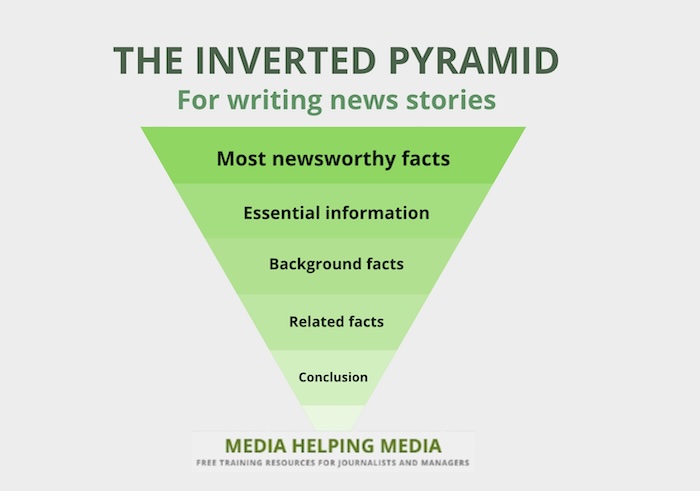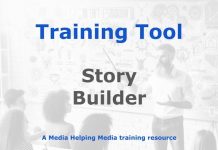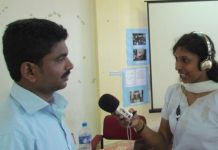 Normally, when writing for a school project or business presentation, you assemble all the information, set it out, link it together, and reach your conclusion.
Normally, when writing for a school project or business presentation, you assemble all the information, set it out, link it together, and reach your conclusion.
The conclusion is at the bottom with all the supporting arguments and information above. News writing is the opposite.You start with the essence of the story, for example, let’s imagine the following headline which reads: “The price of cotton has fallen by 15 per cent”.
You then add extra information such as the impact on producers, the textile industry, the economy, consumer prices, employment, etc.
Details such as whether it was expected, what is being done about it, whether it is short- or long-term, and how people are reacting to the news are then added.
A reader or listener can stop after the headline and summary knowing the basic facts.
The person who wants to know more can continue for added information.
Some journalists refer to this method as the inverted pyramid journalism, as set out in the graphic above, others refer to it as the inverted pyramid. But no matter how you look at it, the headline is at the top, and more information is added according to its relevance and newsworthiness.
Those who need to understand the essential information will be able to access it in the first few lines, while those who are fascinated by the story can continue reading background information that supports the main thrust of the article. And those who are not that interested will have moved on to another news item.
It’s a simple but effective technique that relies entirely on how well focused you are.
You, the journalist, must decide what the top line is, what comes second, third, and so on.
And you must alway keep in mind that you risk losing your audience if you get too bogged down in detail and offer too much of one kind of information at the expense of other aspects of the story.
By John Allen
Analysis
Let’s explore the nuances of the inverted pyramid structure of news writing in greater depth.
The fundamental principle remains: prioritise the most crucial information at the beginning, followed by progressively fewer essential details. This structure caters to readers with varying levels of interest and time constraints.
Imagine the headline: “Local Council Approves Funding for New Park.” This concise statement immediately conveys the core news.
A reader stopping here grasps the essential fact. However, the inverted pyramid allows for layers of additional information for those who want a more complete understanding.
The next paragraph might elaborate on the “What, Why, When, How, Where and Who”
- What exactly is being funded? Is it just the land purchase, or does it include playground equipment, landscaping, and ongoing maintenance?
- Where will the park be located?
- Why was this decision made?
- When will construction begin?
- How will it be paid for?
- Who is involved? Perhaps it’s the local council, specific council members, and community groups advocating for the park.
Subsequent paragraphs can then delve into the specifics.
Perhaps the article details the budget breakdown, outlining how much money is allocated for each aspect of the project.
It might include quotes from council members explaining their rationale for the decision, or from residents expressing their opinions on the new park.
The article could also explore potential challenges, such as environmental concerns, zoning regulations, or community opposition.
Consider the impact of this structure.
A reader skimming the article gets the gist from the headline and first paragraph.
Someone with moderate interest might read a few more paragraphs to learn about the project’s scope and timeline.
A highly engaged reader can continue to the end, gaining a comprehensive understanding of the decision-making process, community perspectives, and potential challenges.
The inverted pyramid isn’t simply about organisation; it reflects a deep understanding of audience behaviour.
Readers often scan headlines and the first few lines before deciding whether to invest more time.
Journalists, therefore, must craft compelling leads that grab attention and convey the most important information concisely.
This requires careful consideration of what constitutes “news.”
- Is it the mere fact of the funding approval, or is it the potential impact on the community?
- Is it the political manoeuvring behind the decision, or the environmental considerations?
The journalist must make these editorial judgements, prioritising the most relevant and impactful aspects of the story.
The inverted pyramid forces journalists to be economical with their language. Every word counts, especially in the early paragraphs.
There’s no room for meandering introductions or lengthy explanations. The focus must be on delivering information clearly and efficiently.
This disciplined approach to writing benefits both the reader and the journalist, promoting clarity and conciseness.
However, while the inverted pyramid is a valuable tool, it’s not a rigid formula.
Journalists must adapt it to fit the specific story.
Some stories might lend themselves to a more narrative approach, while others might require a more analytical structure.
The key is to always prioritise the reader’s needs, ensuring they can quickly grasp the essential information, regardless of how much of the article they choose to consume.
The inverted pyramid, at its core, is a reader-centric approach to storytelling, designed to maximise information delivery and engagement.

Questions
- What is the primary difference between traditional writing for school projects and news writing as described in the text?
- How does the pyramid structure benefit readers who are only interested in the essential information?
- What is meant by the term “pyramid journalism,” and how does it relate to the structure of a news article?
- Why is it important for a journalist to determine the “top line” of a story?
- How does the pyramid structure help maintain a reader’s interest in a news article?
- In what ways can the pyramid structure impact the way a journalist presents information about the economy, consumer prices, and employment?
- Analyse how the pyramid structure might affect the reader’s perception of the news story’s importance.
- Evaluate the effectiveness of the pyramid structure in conveying complex news stories. What are its strengths and potential weaknesses?
- Synthesise the information given in the text to propose an alternative method of structuring a news article. How might this method compare to the pyramid?
- How might the pyramid structure influence the way journalists prioritise different aspects of a news story?
Answers
- Traditional writing builds up to a conclusion, while news writing starts with the essence of the story and adds details in order of relevance.
- It allows them to get the basic facts from the headline and summary without reading further.
- “Pyramid journalism” refers to the pyramid structure where the most important information is at the top, followed by additional details.
- Determining the “top line” ensures that the most crucial information is presented first, capturing the reader’s attention.
- It provides essential information upfront, allowing readers to decide if they want to continue reading for more details.
- It allows journalists to present the most critical economic impacts first, followed by less crucial details, ensuring clarity and focus.
- It emphasises the most important aspects first, potentially shaping the reader’s perception of the story’s significance.
- The structure is effective for clarity and quick understanding but may oversimplify complex stories or omit nuanced details.
- An alternative could be a narrative structure that weaves details throughout, offering a more engaging but potentially less clear presentation.
- It encourages journalists to prioritise information based on newsworthiness and relevance, potentially affecting the depth of coverage for less critical aspects.








